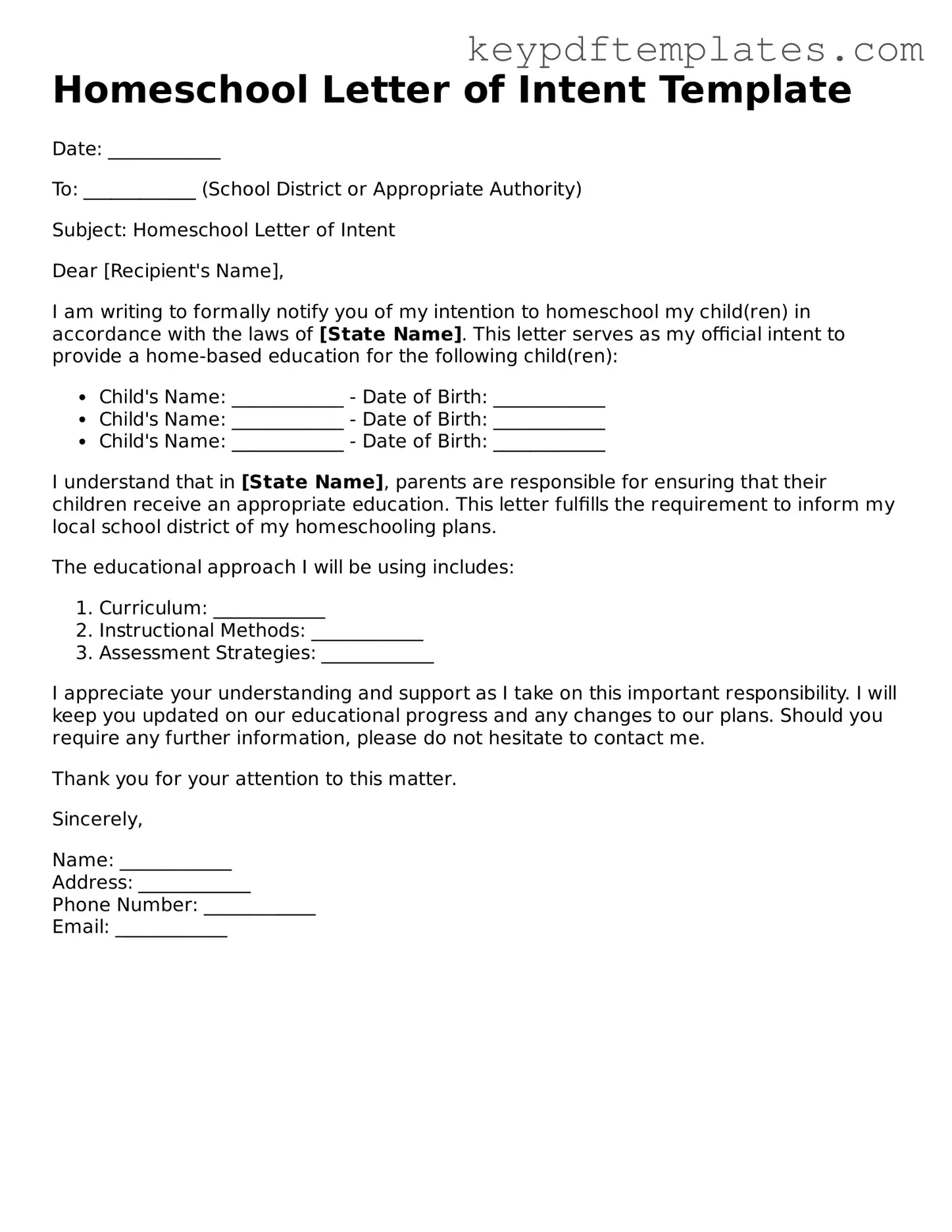Printable Homeschool Letter of Intent Template
The Homeschool Letter of Intent is a formal document that parents submit to their local school district to declare their intention to homeschool their children. This form typically outlines the educational plans for the child and serves as a notification to the school authorities. Understanding how to properly complete and submit this form is essential for a smooth homeschooling experience.
Modify Document Online
